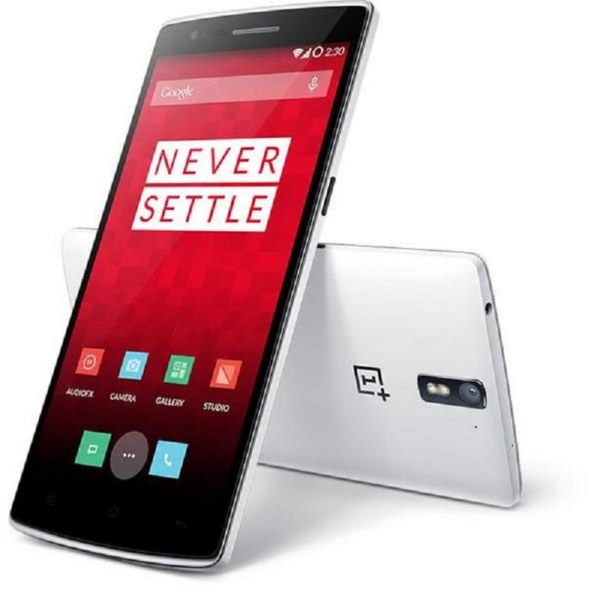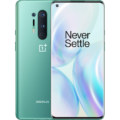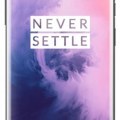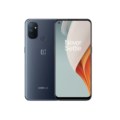- Home
- List of devices
- OnePlus
- OnePlus One
OnePlus One


-
CPU:
-
RAM:
-
Storage:
-
Display:
-
Camera:
-
OS:
Attention to the Smallest Details
The OnePlus One was designed to be beautiful, timeless and comfortable in the hand. Embracing this design language, the One features subtle curves, sleek lines and a slightly raised, jet-black display. Even the smallest details belong uniquely to OnePlus, from the custom cut and engineered PCB boards to the specially designed battery and dyed inner casing. Each component is meticulously aligned and adorned with a OnePlus logo for a gorgeous device inside and out.Measuring only 8.9mm thick, the OnePlus One is ergonomic and easy to grip, with a tapered edge of just 4.6mm.
CyanogenMod
Debuting with the One is CyanogenMod 11S, a special release tuned to take advantage of everything the One has to offer. CyanogenMod 11S reveals the first phase of a unique visual experience blending the best of Android with the freedom CyanogenMod is known for. Unlike most OEM skins, there are no limits to customizing your One – mix and match thousands of themes or return to stock with the new theme engine and store.
Advanced Camera and Gallery apps make capturing and viewing memories even more fun. Record your world in perfect detail with 4K video. Then relive it from the cloud in Gallery, organized by your life.
Championing privacy has been a core part of CyanogenMod’s purpose. SMS encryption between your One and CyanogenMod or TextSecure-compatible device means chats stay between friends. Privacy Guard keeps nosey apps at bay by helping you control how they use your data.
Fast, Smooth, Powerful
The OnePlus One is powered by the Qualcomm® Snapdragon™ 801 processor with quad-core CPUs at speeds of up to 2.5GHz per core, making it the world’s current fastest available processor in a smartphone. Custom Krait CPU architecture, integrated 4G LTE connectivity, Qualcomm® Adreno™ 330 GPU and 3GB of LP-DDR3 RAM combine to offer a fluid and lightning quick user experience.
“Today’s premium mobile devices are measured by their ability to deliver immersive experiences through high-speed LTE connectivity and advanced multimedia, all without compromising performance or battery life,” said Raj Talluri, senior vice president of Product Management, Qualcomm Technologies, Inc. “We are proud to have our Snapdragon 801 processor powering the unique OnePlus One to deliver innovative new user experiences to consumers around the globe.”
A 3100 mAh battery and energy efficient display work together to power the OnePlus One for more than a full day of use.
Experience More, Capture More
The OnePlus One packs a 5.5″ 1080p full HD JDI screen. LTPS and TOL (Touch On Lens) technology provide an incredibly sharp picture and make the gorgeous 178 degree vision display significantly more shatterproof.
A Sony Exmor IMX214 13 megapixel camera with f/2.0 aperture and dual LED flash delivers amazing shots day or night, made more precise and detailed by the 6 physical lenses. Even selfies are more beautiful with a 5 megapixel distortion free front-facing camera and extra wide 80 degree capture angle.
High Quality and Useful Features
The OnePlus One is more than just amazing hardware. Uniquely engineered software offers features that you really want and simplifies your user experience without adding extra, unnecessary bloat. Voice command lets you wake the device or you can launch your favorite apps by drawing pre-set gestures on the sleeping screen. Choose between on screen and capacitive navigation buttons to suit your preference.
Specs
General
| Announced | 01 April, 2014 |
| Released | 01 June, 2014 |
| Status | Available |
Display
| Display Type <strong>Display Technology => </strong> A number of display technologies and types used in mobile phones => TFT (Thin Film Transistor), IPS (In-Place Switching), OLED (Organic Light Emitting Diode), AMOLED (Active-Matrix Organic Light-Emitting Diode), Super AMOLED (an even advanced version of AMOLED), Resistive Touchscreen (Resistive touchscreens contain two layer of conductive material with a very small gap between them which acts as a resistance), Capacitive Touchsceen (Capacitive touchscreen technology consists of a layer of glass coated with a transparent conductor) | LTPS LCD |
| Size | 5.5 |
| Resolution | 1080 x 1920 |
| Pixel Density <strong>Pixel Density (PPI)</strong> is refers to the concentration of pixels on a particular display, measured in pixels per inch (ppi). Pixel density is calculated by dividing the diagonal pixel resolution of a display by its diagonal size, higher pixel density better display quality. | 401 ppi |
| Display Protection <strong>Display Protection => </strong> Gorilla Glass is a special alkali-aluminosilicate glass shield with exceptional damage resistance that helps protect mobile displays from scratches, drops, and bumps of everyday use, It is always better to go for a smartphone with Gorilla Glass for that added protection and peace of mind. | Gorilla Glass 3 |
| Secondary Display | No |
Hardware
| Chipset <strong>Chipset</strong> is a group of integrated circuits designed to perform one or a more dedicated functions, often with real time computing constraints, Popular smartphones are equipped with more advanced embedded chipsets that can do many different tasks depending on their programming. | Qualcomm® Snapdragon™ 801 |
| CPU <strong>CPU</strong> (Central Processing Unit) mostly known as processors, CPU processes instructions in order to carry out certain functions that make your device operate properly. Processors are often described as the brain of computers, smartphones and tablets, Smartphones and tablets rely on processors to carry out their every task, Processors are an incredibly important factor in selecting any type of computing device, including your smartphone. | 2.3GHz quad core cpu |
| GPU <strong>GPU</strong> (Graphics Processing Unit) is a single-chip processor designed to rapidly manipulate and alter memory to accelerate the creation of images in a frame buffer intended for output to a display, This includes things such as lighting effects, object transformations, and 3D motion. | Adreno 330 |
| RAM (Memory) <strong>RAM</strong> (Random Access Memory) is a type of computer memory that can be accessed randomly, any byte of memory can be accessed without touching the preceding bytes that allows information to be stored and accessed quickly from random locations. RAM is the most common type of memory found in computer systems, smartphones, tablets and other electronic devices. | 3GB |
| Internal Storage <strong>Internal Storage</strong> is a data storage space (flash memory) mostly used in smartphones, tablets and other electronic devices where operating system, apps, music, photos, videos, files and other user data Is stored. | 16/64GB |
| Card Slot <strong>Memory Card Slot</strong> is a special slot for inserting a memory card. Memory cards allow you to expand the phone's built-in memory, A memory card (sometimes called a flash memory card or a storage card) is a small storage medium used to store data such as text, pictures, audio, and video, for use on small, portable or remote computing devices such as mobile phones, mp3 players, digital cameras. | No |
| Sensors <strong>Sensors</strong> are electronic components that detects and responds to some type of input from the physical environment. The specific input could be light, heat, motion, moisture, pressure and location, The output is generally a signal that is converted to use in computing systems, a location sensor, such as a GPS receiver is able to detect current location of your electronic device. | Accelerometer, gyroscope, proximity, compass |
Battery
| Battery Type <strong>Battery Type => </strong> Cell phones run on various kinds of batteries depending on the manufacturer, phone size or shape and features. There are basically four types of cell phone batteries => Lithium Polymer, Lithium Ion, Nickel Metal Hydride and Nickel Cadmium. | Li-Poly (Lithium Polymer) |
| Capacity <strong>Battery Capacity</strong> is a measure (typically in Amp-hr) of the charge stored by the battery, and is determined by the mass of active material contained in the battery. The battery capacity represents the maximum amount of energy that can be extracted from the battery under certain conditions. | 3100mAh |
Camera
| Primary <strong>Camera</strong> is able to capture photographs and usually videos, The most important characteristics of a camera are the resolution (measured in megapixels), lens focus type (fixed or automatic), higher megapixel cameras are known to capture higher quality photos, but not always a good measurement of the photos quality. | 13mp |
| Camera Features |
Sony Exmor IMX214 camera f/2.0 aperture 6 element lens 80 degree wide angle (front camera) |
| Secondary | 5mp |
| Video | Up to 4K resolution |
| Flash <strong>Flash Light => </strong> There is commonly two types of flash lights are used in camera mobile phones, LED Flash (LED flash offers lower power consumption with drive circuitry that takes up very little room, LEDs can be strobed faster than any other light source), Xenon Flash (xenon flash produces an extremely intense full-spectrum white light for a very short duration) | Yes |
Design
| Type <strong>Design Type</strong> called form factor refers to a mobile phone's size, shape, and style as well as the layout and position of major components of phone. There are three major form factors seen in mobile phones => bar phones, folding phones and sliding phones. | Bar |
| Dimensions | 152.9 x 75.9 x 8.9 mm |
| Weight | 162 grams |
| Colors | White and Black |
Network
| SIM <strong>SIM</strong> (Subscriber Identity Module) is a small card that contains mobile network subscriber's account information. This allows the phone using the card to attach to a mobile network. The SIM card is most commonly associated with GSM and UMTS mobile networks. Moving a SIM card from one phone to another allows a subscriber to switch mobile phones without having to contact their mobile network carrier. SIM cards can also be used by a phone to store limited amounts of data, such as phone numbers and text messages. | Micro SIM |
| Dual SIM | No |
| 2G Network | GSM 850 / 900 / 1800 / 1900 |
| 3G Network | HSDPA 850 / 900 / 1700 / 1900 / 2100 |
| 4G Network | LTE band 1(2100), 3(1800), 4(1700/2100), 7(2600), 17(700), 38(2600), 40(2300) |
Software
| Operating System <strong>OS => </strong> Every computer system run on a base software called Operating System (OS). Operating System controls all basic operations of the computer (such as smartphone, PDAs, tablet computers and other handheld devices). The Operating System allows the user to install and run third party applications (apps), apps are used to add new functionality to the device. | Android 5.1 Lollipop |
| User Interface <strong>UI</strong> or user interface of a device is the look and feel of the on-screen menu system. How it works, its color scheme, how it responds to button presses, all of these things are part of the user interface. | Oxygen OS or CyanogenMod OS |
Connectivity
| Bluetooth <strong>Bluetooth</strong> is a wireless communications technology for exchanging data between mobile phones, headsets, computers and other network devices over short distances without wires, Bluetooth technology was primarily designed to support simple wireless networking of personal consumer devices. | v4.1 |
| Infrared <strong>Infrared</strong> connectivity is an old wireless technology used to connect two electronic devices. It uses a beam of infrared light to transmit information and so requires direct line of sight and operates only at close range. | |
| Wi-fi <strong>Wi-Fi</strong> is a popular wireless networking technology using radio waves to provide high-speed network connections that allows devices to communicate without cords or cables, Wi-Fi is increasingly becoming the preferred mode of internet connectivity all over the world. | 802.11 b/g/n/ac |
| USB | 2.0 |
| GPS <strong>GPS</strong> The Global Positioning System is a satellite-based radio navigation system, GPS permits users to determine their position, velocity and the time 24 hours a day, in all weather, anywhere in the world, In order to locate your position, your device or GPS receiver must have a clear view of the sky. | Yes |
| NFC <strong>NFC</strong> (Near field communication) is a set of standards for smartphones and similar devices to establish peer-to-peer radio communications with each other by touching them together or bringing them into proximity, usually no more than a few inches. |



